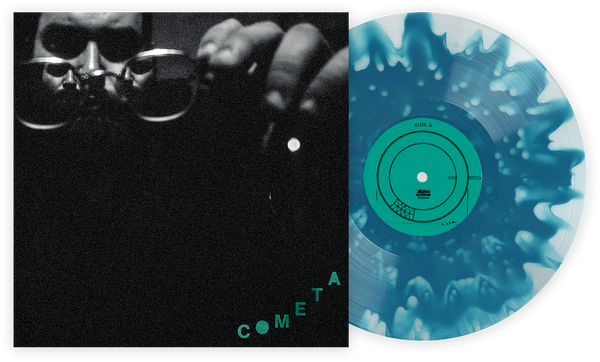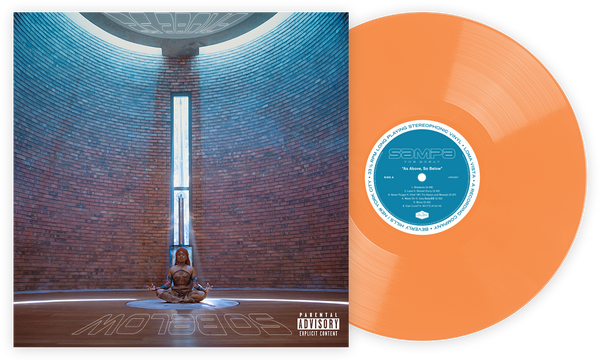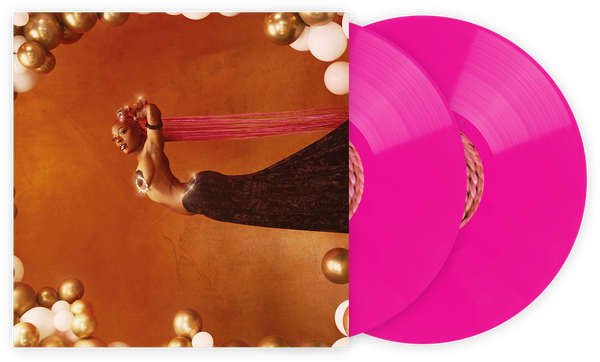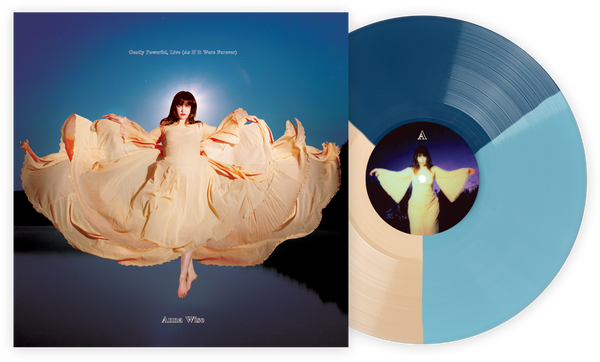That City I Long To Know
Read Our Liner Notes For Kevin Morby’s City Music
“They found him in the living room, crumpled up on the mottled carpet. The police did. Sniffing a fetid odor, a neighbor had called 911. The apartment was in north-central Queens, in an unassertive building on 79th Street in Jackson Heights. The apartment belonged to a George Bell. He lived alone. Thus the presumption was that the corpse also belonged to George Bell. It was a plausible supposition, but it remained just that, for the puffy body on the floor was decomposed and unrecognizable. Clearly the man had not died on July 12, the Saturday last year when he was discovered, nor the day before nor the day before that. He had lain there for a while, nothing to announce his departure to the world, while the hyperkinetic city around him hurried on with its business.”-- ”The Lonely Death Of George Bell,” New York Times, October 17, 2015.
“Ain’t got no friend, in a world so big / Ain’t got no family, ain’t got no kin / Where do you go / Oh, when you die? / Is it pretty and slow? / Is it up real high?”--Kevin Morby, “Come to Me Now”
Noone of sound mind would argue that cities are inherently bad. Maybe when Americans lived mostly in villages and were still fending off dysentery an anti-city sentiment could foment into a movement. But today? Cities are great. There’re restaurants, there’s the close availability of goods and services. Public transportation. Concerts and bands and “scenes.” Cool architecture. A lot of cool people.
But as human society has increasingly converged around urban hubs, it’s become a lot easier to be lonely--truly and existentially. Unlike the lonely of 1850, who were isolated from people geographically more than interpersonally, the lonely of today can spend all day in a city living parallel to hundreds of thousands of people, and never feel connected to any of them. It’s possible to go to a grocery store, buy a full sheet cake that says “Happy Birthday Jeff” on it for yourself, and never interact with a single person, despite there being people everywhere. This is why Tinder is worth around $1.5 billion; our loneliness can be valuated by Silicon Valley for 10 figures, while we stumble through our lives looking for a connection to another person. It’s how a man can die in New York City--the most populous city in America-- and his neighbors only know he’s dead because of the smell.
The loneliness of cities is central to City Music, the fourth solo album from Kevin Morby. Completed shortly after the sessions that yielded 2016’s breakthrough album Singing Saw, Morby recorded the album in California and in Portland, drawing inspiration from the New York Times article above, and the Nina Simone song “Turn Me On”, which if you read it as such, is a lonely song about wanting someone to love. Loosely a concept album about being a lonely person in a lonely city, City Music is a first-person--apparently fictional--account of a character who is at various states of unease at their social isolation. “I am no one, but a face / just a stranger in a strange, strange place,” Morby sings on “Tin Can.” “I live high, in my tin can up in the sky / All those people down below, oh that city that I long to know.”
The character starring in City Music doesn’t want to end up like George Bell though, so he ventures out into the city, struggling for any connection he can find. “I go to a city square / just to see what, or whom, I’m gonna find there / but there ain’t no soul I know / no commotion for me to be a part of,” Morby sings on ”Dry Yer Eyes,” before having to blot his eyes from crying. “Nighttime” paints being a shut-in in a more positive light than “Tin Can;” Morby watches the world pass by his window, but also asks passersby what they would do in his shoes. It’s a way of looking at the George Bells of the world in a different way; it’s all too easy to write them off as crazy hoarders, but if you’re well and truly alone in this life, what’s the motivation to come out? Why leave your apartment? Why care about being friendly with your neighbors?
City Music makes clear how much we need each other-- and need to feel a connection with each other-- from the guy barricading himself in his apartment, to the indie rocker feeling lonely writing an album by himself, to people walking the streets of Manhattan hoping to find someone they know.

It takes only until “Cry Baby,” the second song on City Music, to realize we’re dealing with an album that is in a lot of ways the opposite of Singing Saw. Where that album sounded open, airy, and rustic--which was impossible not to, since it was named after a hand tool--City Music sounds tighter, like a train on tracks, like Converse All Star-ed feet hitting a sidewalk. City Music is reminiscent of so many touchstones of New York City rock, legendary albums like Street Hassle, Is This It, Horses, The Velvet Underground, and Marquee Moon, in that it captures the energy of New York City in a way that will sound familiar to anyone who’s pounded the pavement anywhere in the five boroughs. But City Music is less the hustle and bustle of the city during the day, and more about those moments when the city is empty, eerie and quiet.
“Singing Saw is influenced very obviously by people like Leonard Cohen and Bob Dylan. I wanted to write a record influenced by some of my other biggest heroes, like Patti Smith, or Lou Reed. I wanted to write a rock n' roll record,” Morby told FADER.
“Cry Baby” careens down a subway tunnel via its Velvets-esque piano hammers. The spectre of the “Hey Ho! Let’s Go!” thrust of the Ramones gives “1 2 3 4” its musical tie to the boys in jeans to match its lyrical tie. The sauntering, percussive stroll of “Tin Can” and the vintage clave claps and churning organ swirls of “Pearly Gates” feel like the soundtracks to very different trips downtown. “Dry Yer Eyes,” with its spoken verses about going downtown to just see what’s happening recalls the sadder parts of The Freewheelin’ Bob Dylan, another quintessential New York album.
That classic New York-itude of City Music is surprising in that it was not recorded near the city. But Morby spent significant time in New York as part of indie bands Babies and Woods, before he set off for L.A. a couple years ago. In a lot of ways, Singing Saw--which occasionally had doo-wop vocals and pastoral vistas--is Morby’s L.A. record, while City Music stands for New York, a rare feat of bi-coastal inspiration.
Morby is only 29, but City Music is the 10th album he’s played on. He played bass on four albums by prolific New York indie lords Woods, and did two albums as Babies, with Cassie Ramone of the late Vivian Girls. City Music is his fourth LP as a solo performer, and it feels like it’s the one he’s been working towards this whole time; a breakthrough in form and quality 10 albums in, a feat that rarely happens in today’s go-go-go music economy. City Music has a black-and-white, well-worn feel and a sense that this artist has poured himself entirely into the project with all abandon, leading to an album that will stand sentry over the rest of his catalog. Picking City Music as Record of the Month--once we tucked ourselves comfortably into its environs--was an easy decision.
”That’s the same fire we come from,” the boy said in a high wild voice.
**“Boy you must be nuts,” the salesman said. “That’s the city we’re coming to. That’s the glow from the city lights.” -- Flannery O’Connor, The Violent Bear It Away
The Violent Bear It Away was one of two novels Flannery O’Connor published in her career. It tells the story of Francis Tarwater, a kid from the sticks who is “called” to be a prophet. He spends the novel struggling with what that would mean, and does everything he can to avoid his destiny. At the end of the novel, he ends up riding into a city, ready to meet the residents of a city on their own terms, ready to accept his role as prophet.
City Music incorporates a portion of The Violent Bear It Away in a spoken word interlude (‘Flannery”) in an obvious thematic tie--going to the city to solve for some unfulfilled existential need--but City Music replicates the theme of finding a savior in how often it finds deliverance in music and other people. “1 2 3 4” and its Ramones worship is about how bands can be your friends when you don’t have any, providing you a gateway out of your predicament and into something else (Morby shouting the band’s names like he’s reading them off the circle Ramones logo is a sublime representation of music fandom within music.). The title track, with its repeated entreaties to “go downtown” and soaring guitar solos, plays like spending a day in a park, running around to different restaurants and just getting lost in the day. “Aboard My Train” casts everyone in your past--regardless of their current location or status in your life-- as passengers on a train, riding with you forever. “May the breath we breathe be free, and for you to remain a part of me,” Morby sings over a track that moves like a runaway railcar picking up debris.
All of the themes of City Music coalesce around the album’s denouement, “Downtown Lights.” Morby sings about “watching time fly like a sparrow” as he walks the city after downtowns been “locked up for the night,” with church bells from a distant church providing the soundtrack to his heart. “Downtown’s lights look like a fire as I’m headed out in the snow / You know I’ve gone onto live a thousand lives and die a thousand deaths,” he sings before a one-on-one with Jesus. It’s a sad, shuffling, sparse little song that sounds and feels like a lonely walk at midnight. There’s no resolution at the end of City Music, because loneliness can often only be solved temporarily. But even if it is fleeting, City Music can make the world feel a little less lonely.
Andrew Winistorfer is Senior Director of Music and Editorial at Vinyl Me, Please, and a writer and editor of their books, 100 Albums You Need in Your Collection and The Best Record Stores in the United States. He’s written Listening Notes for more than 30 VMP releases, co-produced multiple VMP Anthologies, and executive produced the VMP Anthologies The Story of Vanguard, The Story of Willie Nelson, Miles Davis: The Electric Years and The Story of Waylon Jennings. He lives in Saint Paul, Minnesota.
Join the Club!
Join Now, Starting at $44Exclusive 15% Off for Teachers, Students, Military members, Healthcare professionals & First Responders - Get Verified!








